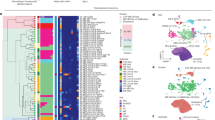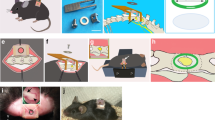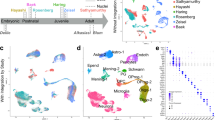Abstract
FOR some years Renshaw cells in the spinal cord have been extensively investigated. While their physiological and pharmacological properties are relatively well known, knowledge concerning their location in the spinal cord is only approximate and is mostly derived from electrophysiological observations1 and indirect anatomical evidence2. From all this work it has been concluded that Renshaw cells are located in the ventral horn medial to motoneurones. For accurate localization of these and other cells within the central nervous system, however, it is necessary to record the electrical activity with microelectrodes which have satisfactory electrical properties, and then to indicate the location of the electrode tip by making, while causing a minimum of damage to the area, a small and easily identifiable mark. A number of techniques have been used for locating the position of microelectrode tips in nervous tissue3. However, most of these techniques require special histological procedures, may be unreliable, or can only be used at the end of an experiment. While the method of Galifret and Szabo4 needs no special histological procedure and can be used several times in an experiment, it makes rather large marks (several hundred μ) and has not proved completely reliable. We have therefore developed a new technique for routinely making precise, easily located marks and have used this technique in localizing Renshaw cells.
This is a preview of subscription content, access via your institution
Access options
Subscribe to this journal
Receive 51 print issues and online access
$199.00 per year
only $3.90 per issue
Buy this article
- Purchase on Springer Link
- Instant access to full article PDF
Prices may be subject to local taxes which are calculated during checkout
Similar content being viewed by others
References
Eccles, J. C., Fatt, P., and Koketsu, K., J. Physiol., 126, 524 (1954).
Szentagothai, J., Acta Morph. Hung., 8, 287 (1958).
Frank, K., and Becker, M. C., in Physical Techniques in Biological Research, 5, Electrophysiological Methods, A, edit. by Nastuk, W. L. (Academic Press, 1964).
Galifret, Y., and Szabo, T., Nature, 188, 1033 (1960).
Wilson, V. J., Talbot, W. H., and Kato, M., J. Neurophysiol., 27, 1063 (1964).
Willis, W. D., and Willis, J. C., Nature, 204, 1214 (1964).
Rexed, B., J. Comp. Neurol., 100, 297 (1954).
Author information
Authors and Affiliations
Rights and permissions
About this article
Cite this article
THOMAS, R., WILSON, V. Precise Localization of Renshaw Cells with a New Marking Technique. Nature 206, 211–213 (1965). https://doi.org/10.1038/206211b0
Issue Date:
DOI: https://doi.org/10.1038/206211b0
This article is cited by
-
Properties and axonal trajectories of posterior semicircular canal nerve-activated vestibulospinal neurons
Experimental Brain Research (2008)
-
The three-neuron corneal reflex circuit and modulation of second-order corneal responsive neurons
Experimental Brain Research (2007)
-
Imagining the brain cell: the neuron in visual culture
Nature Reviews Neuroscience (2006)
-
Modification of cornea-evoked reflex blinks in rats
Experimental Brain Research (2005)
-
Otolith and canal integration on single vestibular neurons in cats
Experimental Brain Research (2005)
Comments
By submitting a comment you agree to abide by our Terms and Community Guidelines. If you find something abusive or that does not comply with our terms or guidelines please flag it as inappropriate.



